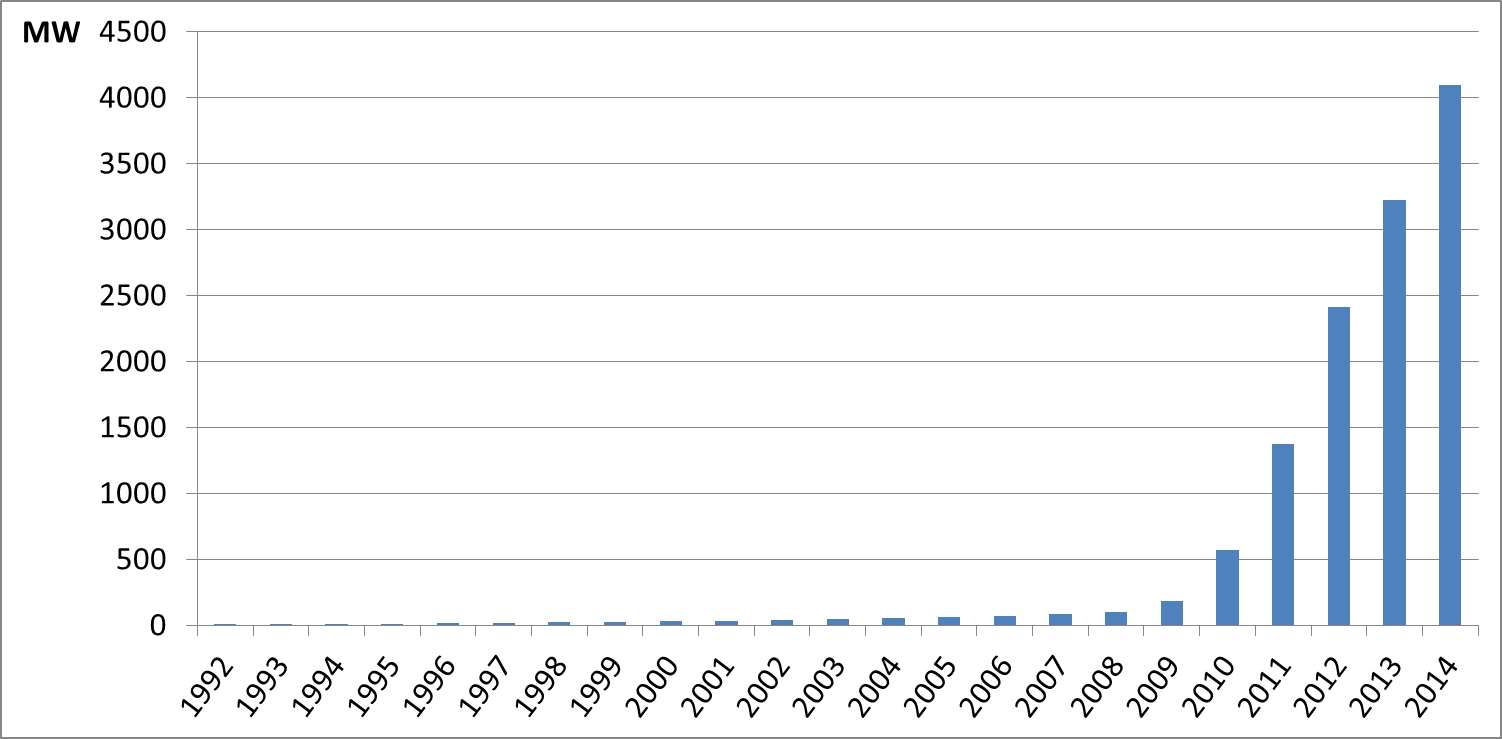Is there a secret Labor-Liberal plan to stop solar's next 4GW?
As solar PV hits 4 gigawatts of installed capacity in Australia, Environment Minister Greg Hunt has suggested in a letter to Labor's Mark Butler, and dropped to The Australian newspaper, that Labor had privately sought to reduce support to rooftop solar systems above 10 kilowatts in size.
The chart below details solar's almost inexorable surge that began in 2009. Before that date the total installed capacity of solar across the whole of the technology's history had only just got above 100 megawatts in Australia. In 2009 the sector added 87MW, and it was thought that was a boom. But by 2012 the industry installed a gigawatt (1000MW) in one single year. Since then it has tracked at a touch above 800MW per annum, in spite of incredible regulatory uncertainty and successive large cuts to government support.
Figure 1: Cumulative installed capacity of solar PV in Australia

Source: Australian Photovoltaic Institute and Green Energy Markets
This continued solid growth of solar has understandably led energy industry incumbents to put considerable pressure on both Labor and Coalition parliamentarians to make further changes to regulatory settings to hobble solar's growth.
Under the prior Labor Government it was understood Greg Combet was receptive to this push, and a range of tweaks were made to the Small-Scale Renewable Energy Scheme, or SRES, which supports solar systems of 100 kilowatts in scale or smaller.
Now Liberal Minister Greg Hunt is accusing Labor of seeking to make further reductions in support for solar in the recent negotiations over the future shape of the Renewable Energy Target.
The letter, obtained by Climate Spectator, states:
“... the Coalition has committed to protecting household solar with absolutely no change to that program. By contrast, the ALP has privately proposed reconsidering whether to change the deeming rate for solar units between 10kW and 100kW. You cannot say one thing privately and another thing publicly.”
Yet several representatives of the solar energy industry are completely dismissive of Hunt's insinuation. One pointed out that the Coalition has been extremely tricky in the language it's used to describe their position as no changes to “household” solar.
“What's their definition of ‘household solar'?”, one solar industry insider exasperatedly told Climate Spectator. “They know full well that the small-scale scheme supports a significant and growing number of systems larger than what are installed on households, yet in meetings in Canberra just last week they refused to clarify what they mean.”
The Australian Solar Council's chief executive John Grimes expressed similar sentiments, telling Climate Spectator, “Labor have confirmed to us that their position is and remains ‘no change to the SRES'. Tony Abbott did this [sought changes to the RET], not the Labor party, and pretending otherwise just makes them look grubby.”
Climate Spectator has also been informed by sources outside the renewable energy industry that the Coalition was seeking to reduce the threshold size for solar systems eligible under the SRES, down from 100 kilowatts to 10 kilowatts. Instead these systems larger than 10kW would be moved into the Large-Scale Renewable Energy Target so that their growth would come at the likely expense of wind power developments, rather than coal.
Now, of course there is a very easy way for the Coalition Government to resolve this.
Earlier today Climate Spectator put the question to Minister Hunt's office that in light of his recent accusations about Labor, when he states that the government intends to make "no changes to household solar", does this mean he is ruling out any changes at all to the SRES scheme, including system size eligibility?
Several hours later we are still to receive a response to this relatively simple question.













